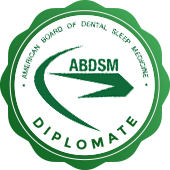Break or Crack a Tooth? Here’s What to do Next

Although teeth are the hardest part of our body and we generally do not worry about it happening, anyone that has broken or cracked a tooth knows how painful it can be. Despite being as careful as you can, you might still accidentally crack your tooth. This article will guide you through the steps you need to follow if such a scenario occurs.
In order to know how to treat the cracks in your teeth, it is important to have an understanding of all of the layers of your teeth. Our teeth can be divided into three layers:
- Enamel: The hardest outer part of the tooth
- Dentin: The hard part underlying the enamel with microscopic tubes. When the enamel has damage, hot and cold pass through causing more sensitivity.
- Pulp: The soft and innermost part of every tooth where the blood vessels and nerves go through.
Types of cracks in teeth
The treatment for cracks in teeth depends on the type of break or crack.
Fractured cusps
These are the cracks around your tooth filling. They usually occur when the filling is too large and they don’t cause much pain either. Depending on the severity of the fracture, you may require endodontic therapy along with crown replacement.
Cracks that extend beyond the gums
If the crack extends beyond the gums, the tooth will need to be extracted promptly.
Split tooth
The crack extends from the surface to below the gum line. In this case, the dentist might be able to save half of the tooth.
Vertical root fracture
These cracks start from below the gum line and reach the top. There may be fewer symptoms and could need to be extracted.
Symptoms of a broken tooth
The symptoms of a broken or cracked tooth depend on the extent of the crack. You should see your dentist when you have symptoms such as pain while chewing or biting food, recurring pain, sensitive teeth, and swelling of the gums.
Just having a toothache or some dental problems does not mean that you also have a cracked tooth.
You can first try to confirm if you have a cracked tooth by doing the following quick DIY tests:
- Know your dental history and your dieting habits
- Feel for cracks with your tongue or fingers
- Use a magnifying glass to search for any cracks
- Use a dental dye
- Look for inflammation, as it can be a sign of dental cracks
- Perform a biting test
Treatment for cracked teeth
Finally, after confirming your suspicions of having a cracked tooth, you can visit a dentist to treat it. If the symptoms are absent or just mild, you may require no treatment. The course of treatment is based on the size, location, and type of crack that your tooth has. Your dentist will recommend the following treatment options:
Bonding
This treatment method will be recommended to you when the size of the crack is relatively small. The dentist will use plastic resin to fill the crack and restore the look and function of the tooth.
Crown
A crown is basically a prosthetic device made up of porcelain or ceramic used to cover the cracked tooth. During this process, the dentist will scrape some of the enamel and take the impression of your tooth. Then, it will be sent to a dental lab and get a crown ready that matches your tooth color. A well fixed and managed crown will last you a lifetime.
Root canal
This choice of treatment is chosen when the crack is extensive and extends to the pulp. This process helps in the prevention of infection and also strengthens the tooth from further damage.
Breaks or cracks in your teeth can become a real pain — whether that be physical pain or attempting to manage it. Visit the dentist if you suspect you could have a broken or cracked tooth.
Request an appointment here: https://artisandentalbellevue.com or call Artisan Dental at (425) 454-2005 for an appointment in our Bellevue office.
Related Posts
When a dental emergency hits, it is important to know where to go to access the right care. An emergency dentist is often the right provider, although life-threatening emergencies require a trip to the emergency room. Learning when to go to the emergency dentist versus the emergency room can save you time, money, and discomfort.…
Minor dental pain is rarely a concern. However, severe tooth or gum pain may require treatment from an emergency dentist. In many situations, this type of dental discomfort can prevent a person from performing essential everyday tasks. It is often caused by cavities, which can worsen or cause complications if left untreated.There is a reason…
Medical hospitals are often unequipped to handle dental emergencies; this is when an emergency dentist becomes necessary. Recognizing the signs of a dental emergency is important for patients to get the help they need right away. Once patients know they are dealing with a dental emergency, they can look up “emergency dentist near me” instead…
You might need an emergency dentist if you are dealing with an unexpected dental issue or injury that requires immediate treatment like a knocked-out tooth, unbearable toothache, or infected tooth. Waiting a couple of weeks for a dental appointment does not cut it in these situations.An emergency dentist can help you navigate around unforeseen dental…









